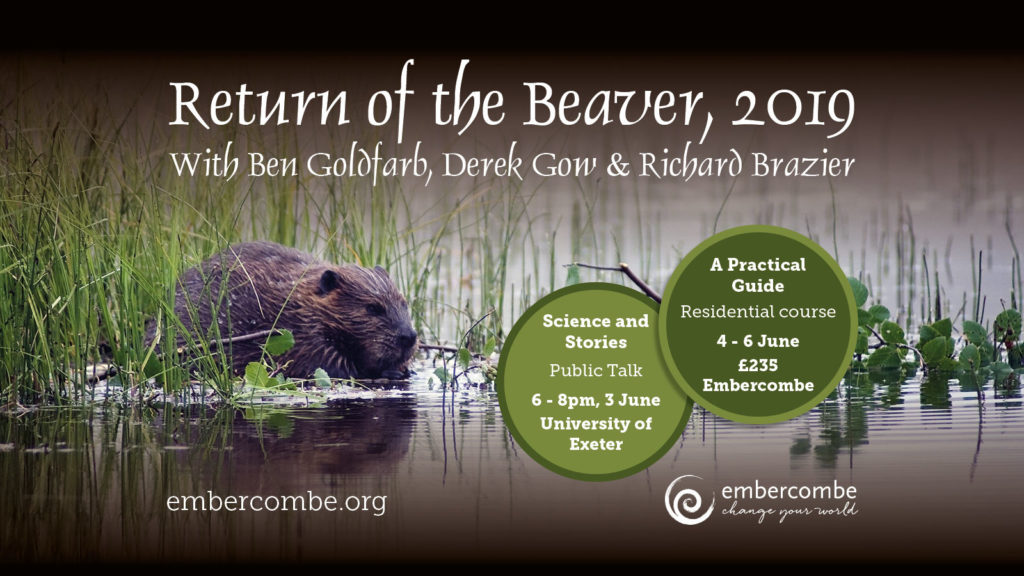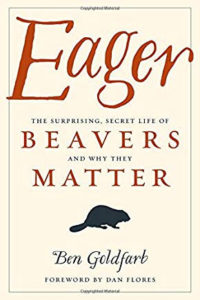In the Altay prefecture in Northern Xinjiang, People’s Republic of China, Chu Wenwen is a wildlife biologist working to try and save the endangered Sino-Mongolian beaver. From a very young age Chu Wenwen has followed and learnt from her father Chu Hongjun, a notable wildlife expert. The Sino-Mongolian beaver, Castor ï¬ber birulai, is only found on the Ulungur River and there maybe as few as 500 left. They are particularly under threat because of the expanding human population and pressures on their habitat. Chu Wenwen is trying to teach the local people that the beavers need protection. She has produced films of the beavers, set up an NGO about wildlife protection and next year she aims to build an education centre (see CGTN, also paper: Chu, H. & Jiang, Z. (2009) Distribution and conservation of the Sino-Mongolian beaver Castor fiber birulai in China. Oryx 43: 197-202)
China’s “Princess of the Beavers” on a conservation mission
“Beavers like music!”
The Diplomat has an interesting article about rangers in Mongolia and the work they do, including looking after a captive group of 48 beavers from Russia and Germany. These are used for reintroduction projects. To quote, “Reintroduction projects haved gained popularity as beaver dams improve watersheds and help restore the natural ecosystem.“ Apparently, the captive beavers like music! Not much is known about the population of 300 rare, native beavers living on the Bulgan river in western Mongolia; these belong to a subspecies of the Eurasian beaver, Castor fiber birulai .
Beaver seen on Loch Lomand in Scotland
A beaver has been seen to the southeast of Loch Lomand in Scotland. The Loch is 36 km long and 1-8 km wide with its southern shores about 23 km northwest of the City of Glasgow. This is a significant sighting since it shows that beavers have made their way west from the River Tay, where beavers were illegally released 10 or more years ago and now number 400-600, via the extensive system of inland waterways including the Rivers Earn and Forth and their tributaries (The Sunday Post).
Beaver Management Strategy Framework
The Beaver Management Strategy Framework has been published “to help inform decisions regarding the long-term management of beavers, the wetland habitats they establish, and their general activities in the River Otter (Devon, England) in the future” . It can be viewed on the Devon Wildlife Trust web pages.
The return of the beaver in Russia
The Beaver Aquarium, a beaver breeding centre in Voronezh State Biosphere Nature Reserve, was set up in 1924 after hunting was prohibited by The Soviet government; at the time there were few beavers left in the wild. Beavers have been bred at the Aquarium and released since 1934, and now the population in southern Russia is estimated to be >700,000 (Euronews, Restexpert).
Young beavers filmed in Cropton Forest in the north of England
A pair of beavers were translocated to Cropton Forest near Pickering in North Yorkshire, England in April as part of a five year trial to see how their dam building would reduce flooding. Recent film shows that the pair have had two kits since their release (ITV News, BBC News, Yorkshire Post, Yahoo News).
Return of the Beaver – public talk and residential course 3-6 June 2019, Exeter, Devon

With Ben Goldfarb, Derek Gow and Richard Brazier
Hosted by University of Exeter, Embercombe and Devon Wildlife Trust
Join us as we delve into the science, the story and the practical implications that surround the reintroduction of this once extinct animal to Great Britain. What do we need to know, what can we learn from others and where do we start?

Ben Goldfarb is an award-winning American environmental journalist whose 2018 book on beavers is a must read for all people interested in freshwater ponds, lakes, rivers and wetlands. The book elegantly makes the case as to why a world with beavers is far healthier both to humans and other wildlife than a world without them. Eager: The Surprising, Secret Life of Beavers and Why They Matter has won the 2019 Pen/EO Wilson Prize for Literary Science Writing.
For further information and where to book:
Talk: 3 June – Science and Stories, Exeter University: https://returnofthebeaver.eventbrite.co.uk/
Residential course: 4 – 6 June – A Practical Guide, Embercombe: http://www.embercombe.org
Beavers released into Cropton Forest, Yorkshire
Two beavers from Scotland have been released into a 10 ha enclosure in Cropton Forest in Yorkshire, England as part of a 5-year trial to assess the impact of their activity on flooding and biodiversity (see post of 27 september 2018) (BBC News, Flipboard, The Telegraph, ITV, Minster FM, Bridlington Free Press, Yorkshire Post).
Attempts to prevent protected status for Scotland’s beavers rejected
A last-minute attempt by Conservative MSP John Scott to prevent beavers in Scotland attaining protective status was rejected by the Scottish Parliament’s Environment Committee yesterday (The Courier).
Beavers released into enclosure in Essex, South-east England
Following the post on 7th November 2018, a pair of beavers have now been released into a 4 ha enclosure on Spains Hall Estate in Finchingfield, Essex in the east of England to help prevent flooding. The estate is now owned by celebrity chef Jamie Oliver. The environment Agency will monitor flows in Finchingfield Brook that runs through the enclosure to see if the activities of the beavers improve water quality and help reduce the risk of flooding. They will compare the findings with more conventional flood prevention methods (BBC News, Braintree and Witham Times, Essex News, ITV News).